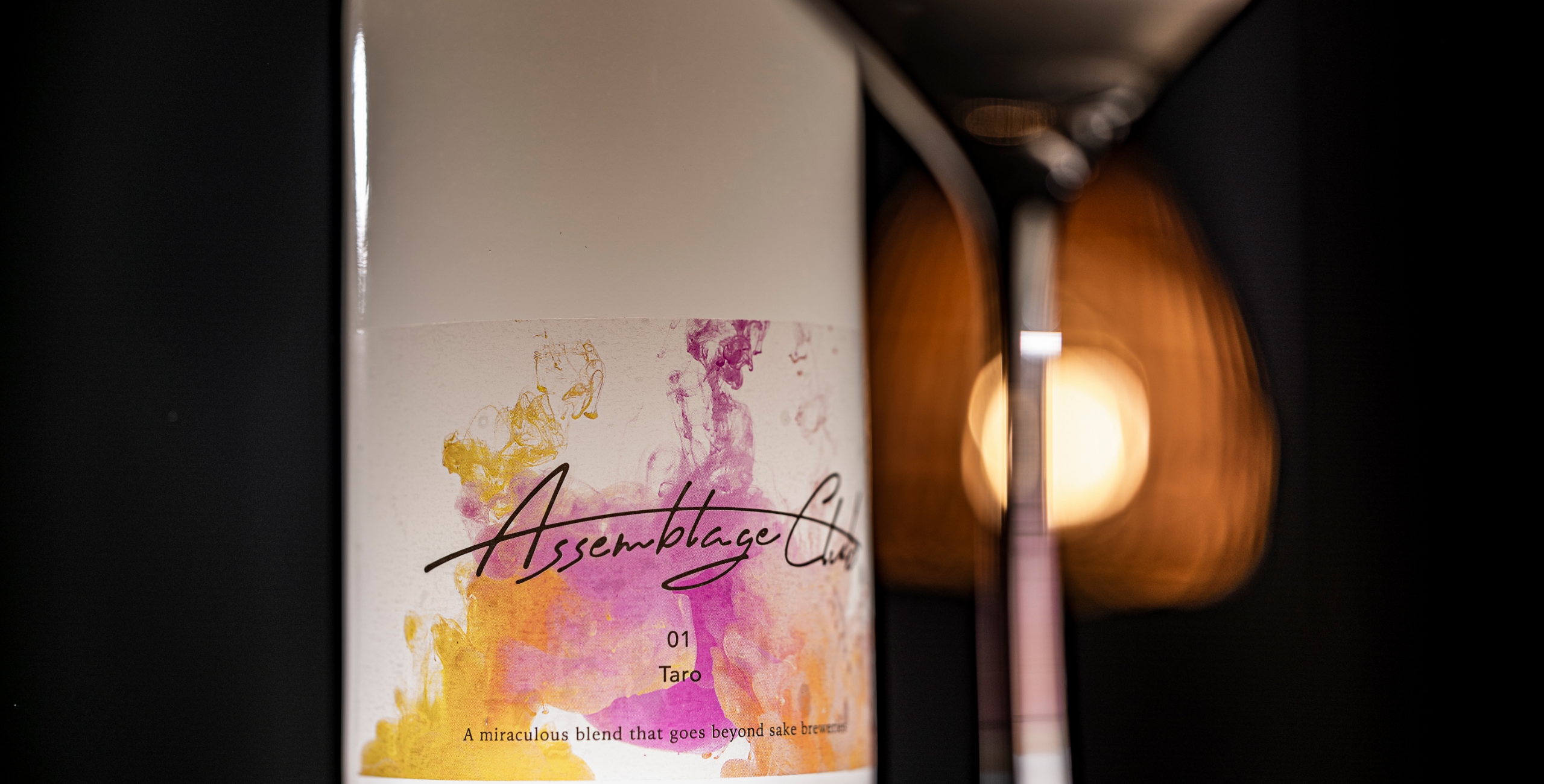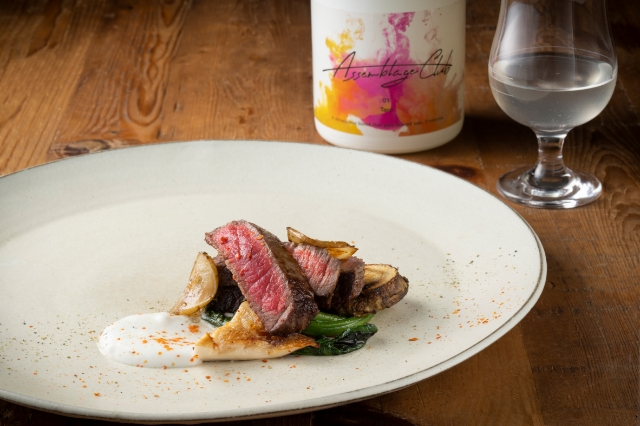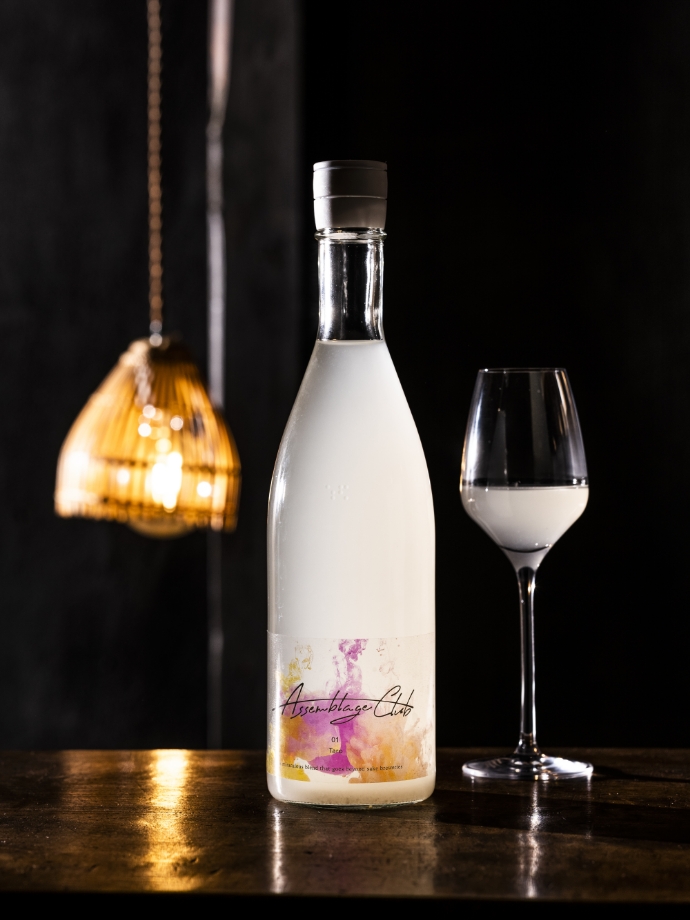
Application Deadline: End of December
2023 Scheduled to ship around 1/18
*Will close when capacity is reached.
Gastronomic delights from around the world await
Part 1 [01].
Why Sake and Wagyu Beef Now?
In recent years, "umami" has come to be discussed around the world as an element that determines what "delicious" means. Umami" has overturned the equation of delicious food = high calorie content, and is now becoming popular among gourmets around the world, along with the spread of Japanese cuisine.
Umami" is a type of amino acid, and is also important as an element for building the human body. Many people know that meats contain a good balance of essential amino acids, which cannot be synthesized in the human body. Of particular note is the abundance of inosinic acid, a nucleic acid-based "umami" found in meats. We will discuss the reasons for this later.

Boosting Wagyu Beef Bliss The Sake Assemblage is
completion
Chefs and gourmets talk about the Maillard reaction*, cooking methods that keep the juices flowing, and aging methods to increase the "umami" of beef without missing out, because that is how interested they are in the "umami" of beef and how delicious they find it. Wagyu beef, in particular, can be said to be a food with a special aroma called wagyu-ko, which spreads in the mouth and gives a strong sense of euphoria along with a savory sweetness.
Would you believe me if I told you that the sake lineup offered by one of the hard-to-get-reservations yakiniku restaurants in Tokyo these days is "sake"? This is just one answer to the question: Sake is necessary for the best Wagyu beef.
*Maylard reaction: A reaction between sugar and amino acids that produces a brownish color, aroma and flavor.
Assembled from umami research
Respects the aroma of ingredients and boosts umami

Photography cooperation: So/s/KAWAHIGASHI
Among the world's brewed alcoholic beverages, sake contains a great deal of umami. It is said that it is of course more than wine or beer*1. Therefore, we thought it would be possible to layering and boosting "umami" by encountering Wagyu beef, which is also "umami oriented." Sake contains more than 20 kinds of amino acids, but the most abundant among them is glutamic acid. When combined with Wagyu's inosinic acid, a synergistic effect of "umami" occurs. A familiar example is the Japanese soup stock "kombu and dried bonito flakes*2". This combination can be completed with wagyu beef and sake. (We call this "dashi soup theory"). However, the blissful wagyu aroma is so delicate that you cannot feel it when you pinch your nose. In other words, sake designed with an emphasis on aroma may inhibit this. Sake's aroma is suppressed and its "umami" is boosted. This is the main frame of this design. In fact, umami itself is not delicious by itself. It boosts other main flavors, so it is very important that it does not mask the Wagyu aroma. Sometimes in the pairing stage, people talk about "a strong sake that doesn't overpower the ingredients," but the flavor we aim for at our club is to "bring out the best, but not overpower. (We call this the "vow of not to be outdone"). (We will call this the "vow of no defeat"). This vow is necessary to enjoy the umami of delicious foods from all over the world.
1 Not all wine and sake data were analyzed.
2 It is said that by combining the umami of kelp and dried bonito flakes, one can taste up to 7 to 8 times more umami than when tasting them separately.

Photography cooperation: So/s/KAWAHIGASHI
A little secret recipe revealed.
ring a bell of bliss
The types of sake that people talk about as going well with beef are all correct. The "umami" type of rice, the "acidity" type that drains away oil, the "complex flavor" type that gives a sense of weighty maturity, and so on. In this case, the amino acid content is generally high (Matsui Shuzo's unfiltered raw sake series), and Tomio Junshu Premiere Amour is both sour and tasty. These are the main players in this year's competition. However, each sake brand has its own identity. The brewer brews the sake with the role and personality of each brand in mind. They do not create flavors just to match specific ingredients. That is why we can literally assemble the flavors of each brand in a three-dimensional way by assembling these sakes in an assemblage and successfully creating a mille-feuille. When put in the mouth with meat, they boost the Wagyu aroma and umami, then disappear into the back of the throat, bringing a blissful aftertaste like a surging wave.
This time, we focused on Wagyu beef, but the design of "respecting aroma and boosting umami" is likely to produce even better relationship values with meats and ingredients other than Wagyu beef.
Now, it is your turn. Please try this Assemblage Club 01/CODENAME : Taro and start your journey of unknown flavors. You will surely encounter and discover more than just meat.


This time, we focused on Wagyu beef, but the design of "respecting aroma and boosting umami" is likely to produce even better relationship values with meats and ingredients other than Wagyu beef. Now, it is your turn. Please try this Assemblage Club 01/CODENAME : Taro and start your journey of unknown flavors. You will surely encounter and discover more than just meat.
Now, the world's gastronomy
We are waiting for you.
Let's start a great voyage together!

Assemblage Club 01CODENAME : Taro
- assemblage recipe
- private
- raw materials
- Rice (domestic),
Rice Koji (domestic rice)
- ratio indicating the quantity of polished rice gained from a given quantity of brown rice (nowadays usually expressed as a percent)
- private
- alcohol content
- 15%.
- content by volume
- 720ml
- Storage Method
- refrigerated storage
- Place of manufacture
- Matsui Shuzo Co., Ltd.
- sales
- Corporation
Leaf Publications, Inc.




